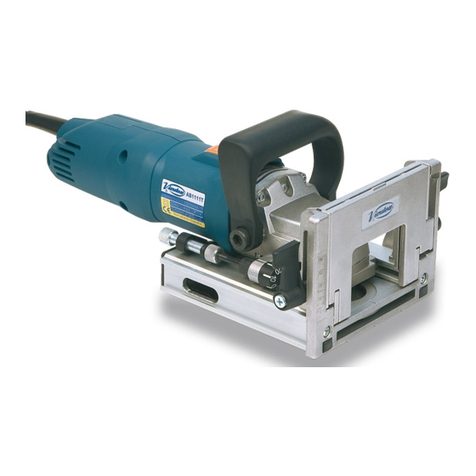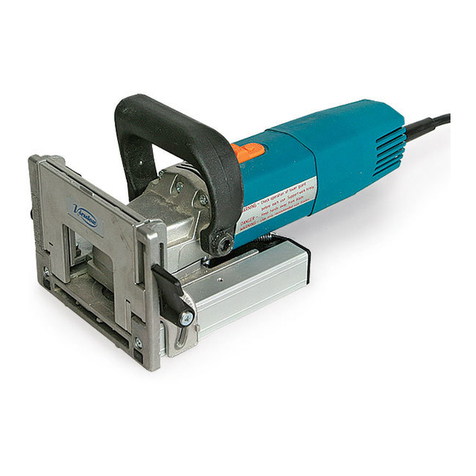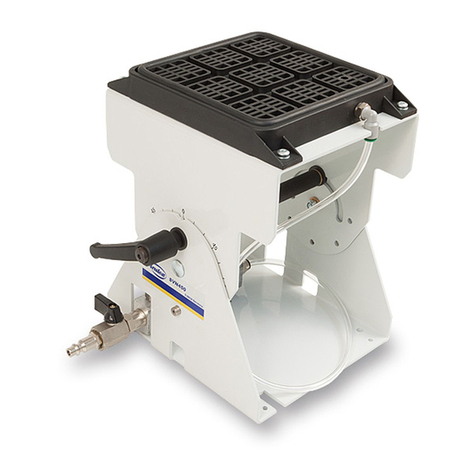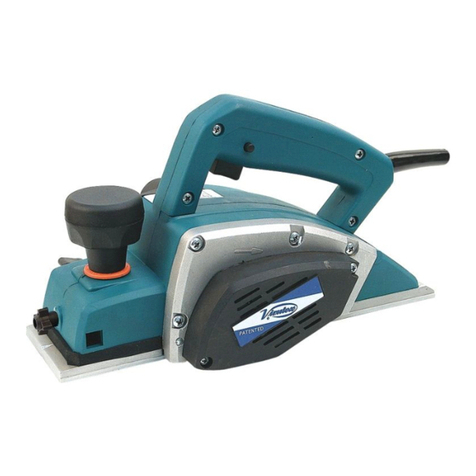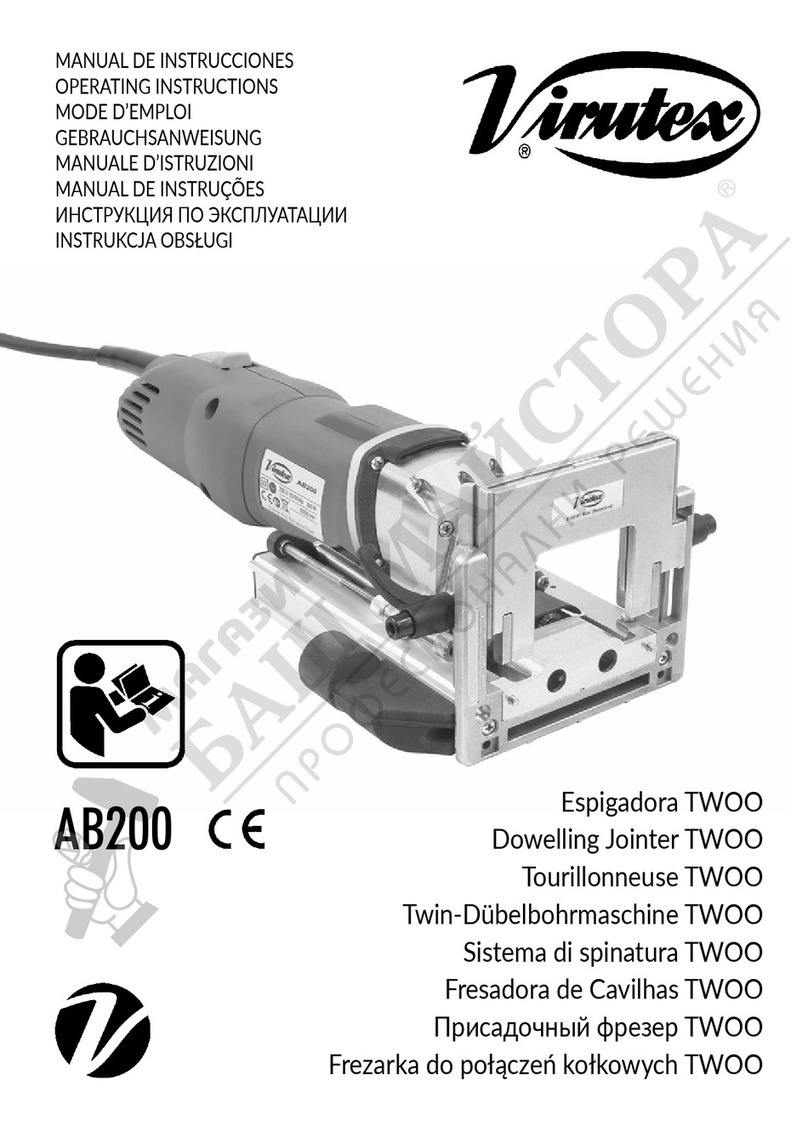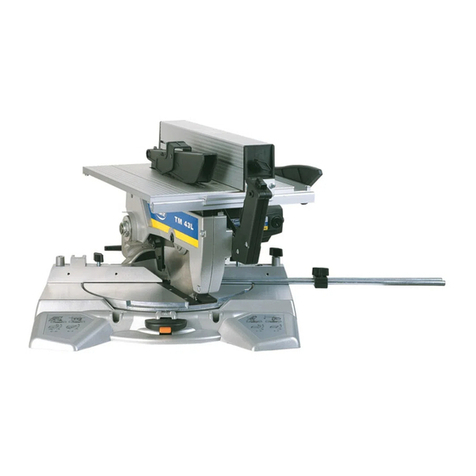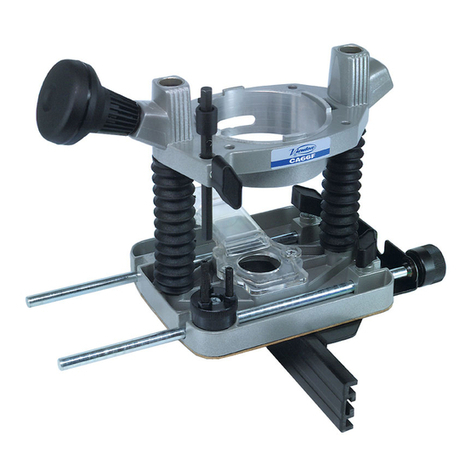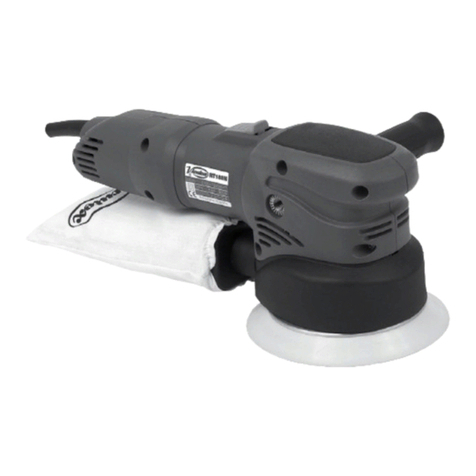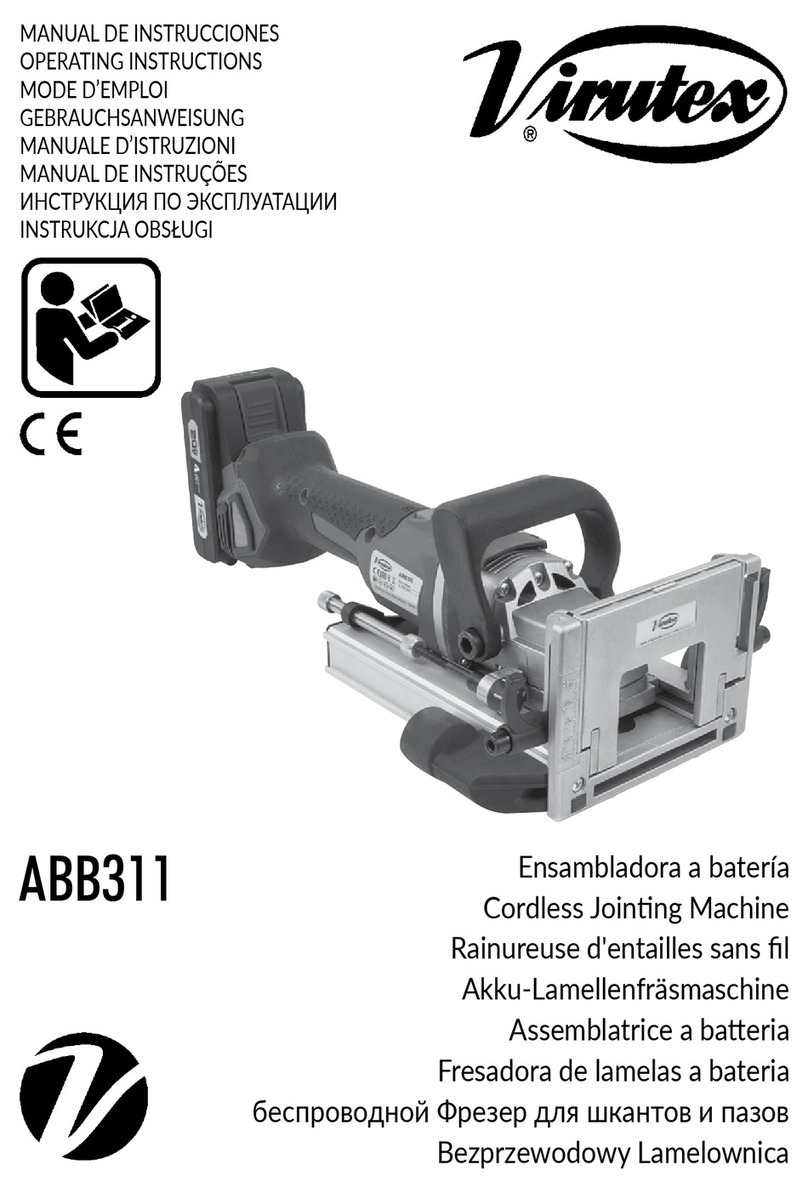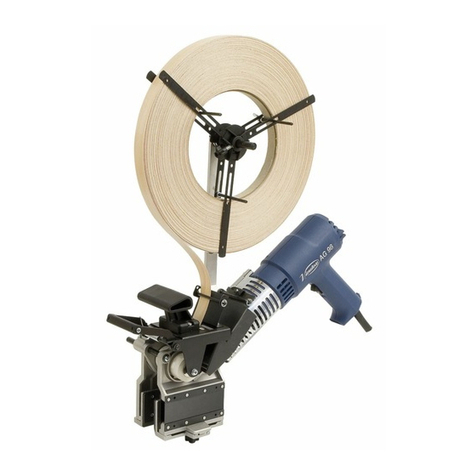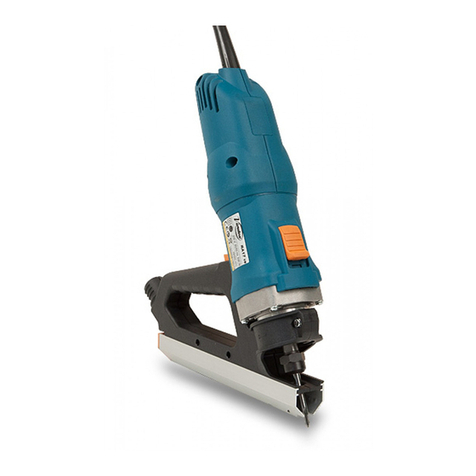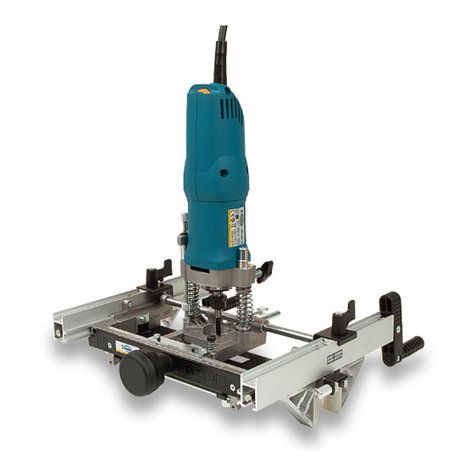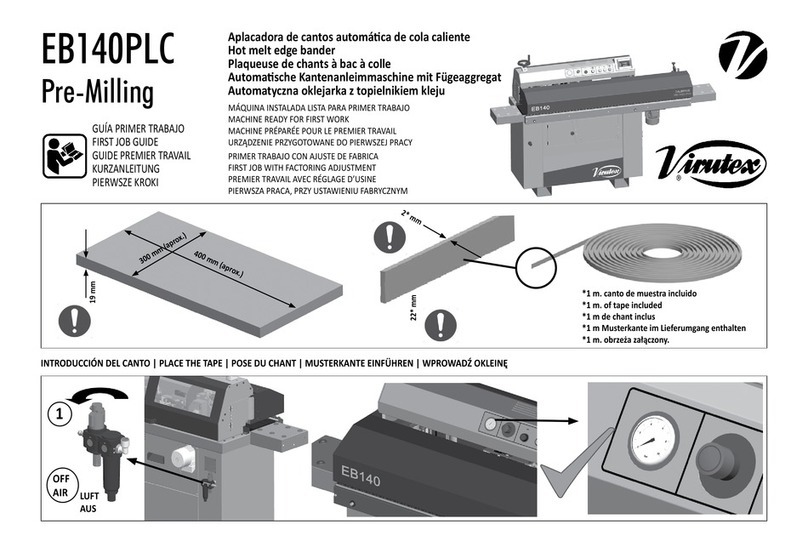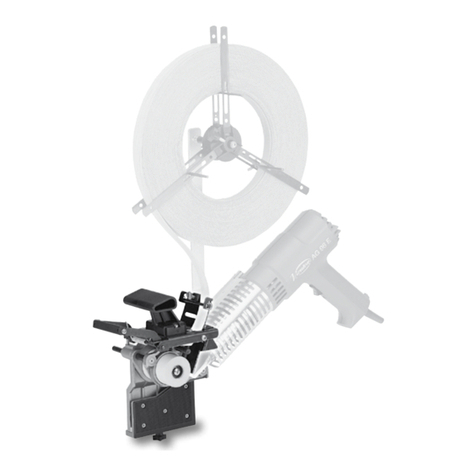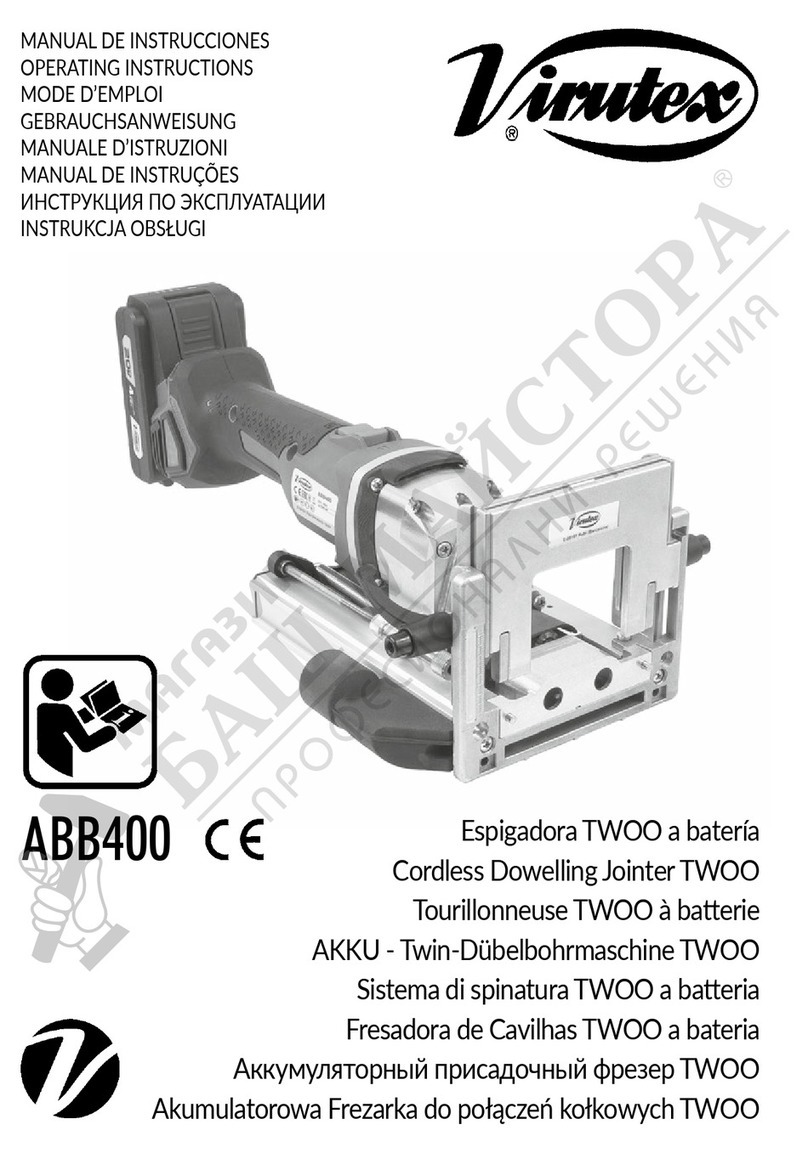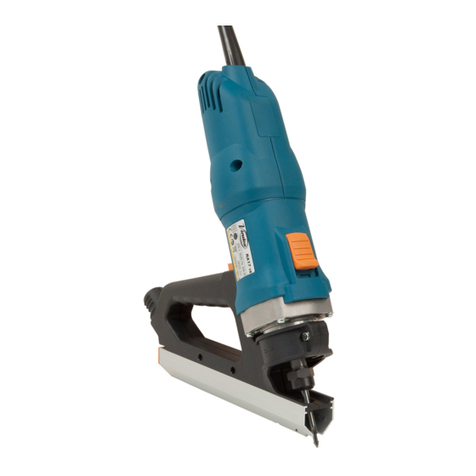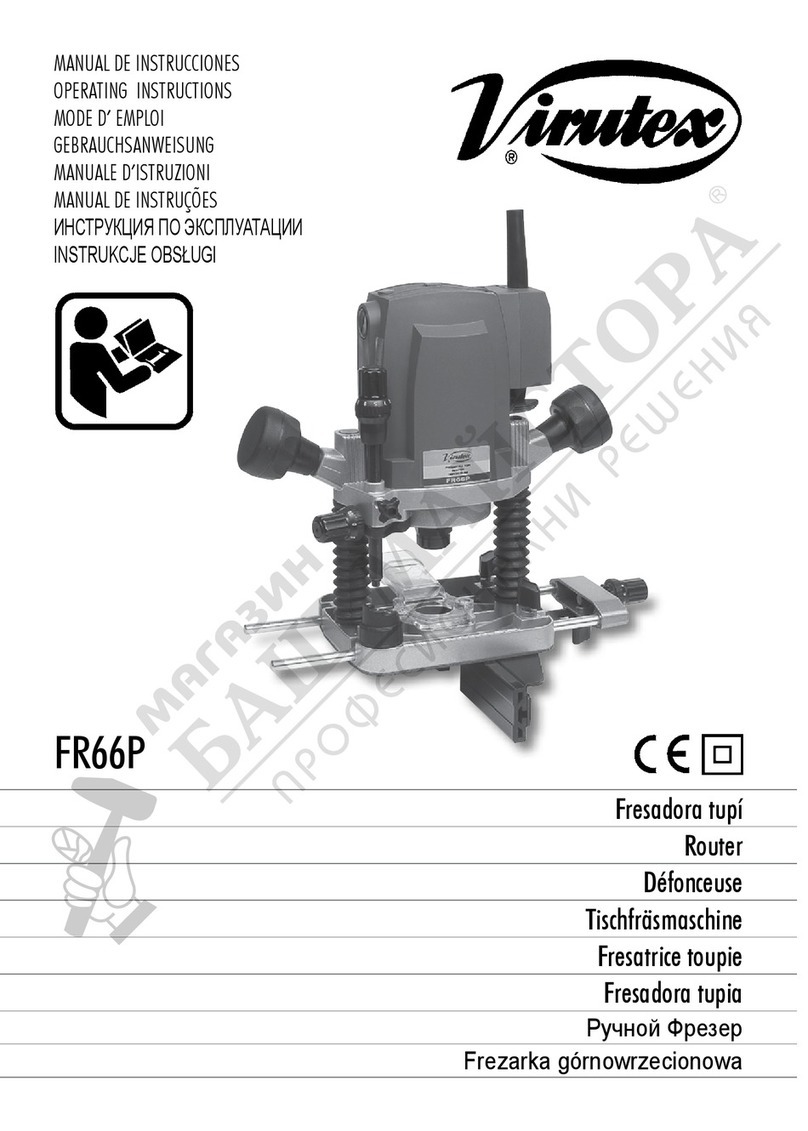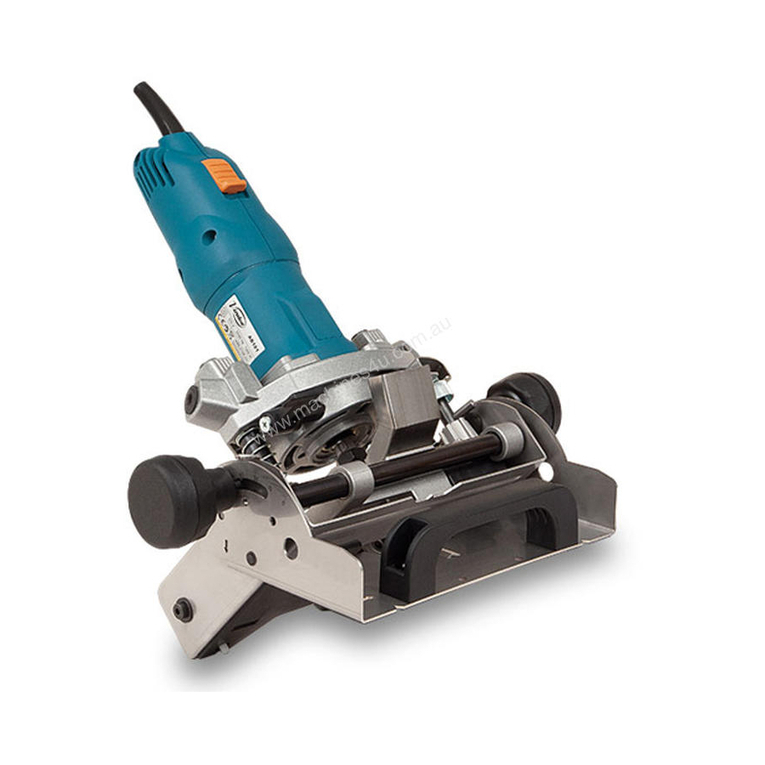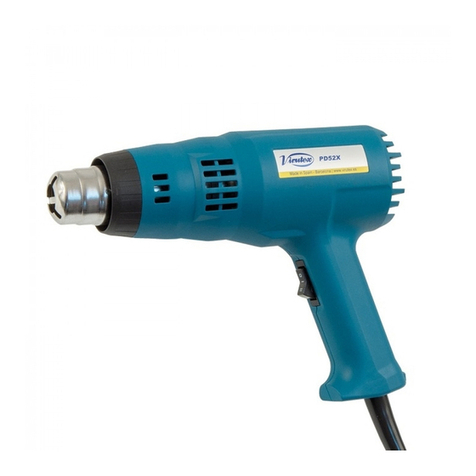10
5.3 ASSEMBLING THE LATERAL SQUARE
WARNING. Disconnect the machine from the power
supply before assembly.
Place lateral square W (Fig. 5), through holes C (Fig.
4) on the head and fix it at the required height using
screws H.
5.4 ASSEMBLING THE CENTRING DEVICE
Assemblethe shaft on the lateral square in the position
shown in (Fig. 6) and fix it with the nut supplied.
6. ADJUSTMENTS
6.1 ADJUSTING HEAD TILT
WARNING. Disconnect the machine from the power
supply before adjustment.
With the FR292R router, head tilt may be set for the
cutter head to be between 0 and 91.5° and may be
locked in any position using screws N (Fig. 7 y 8).
To trim with the 90° conical bit, place the head at 45°
+1° = 46° approximately, to avoiddamaging the coating
of the surface when trimming the edge.
Similarly, to trim edges using the D.18 straight bit,
also supplied with the machine, turn the head to the
maximum 91.5°, so that the cutting edge of the bit is
1.5° below the head horizontal (Fig. 9).
6.2 ADJUSTING THE HEAD WITH
REGARD TO THE CUTTER
WARNING. Disconnect the machine from the power
supply before adjustment.
For the cutter head: The head is set at the required
height by loosening knob D (Fig. 7), turning wheel Y
(Fig. 7) until the required position is reached and it is
then fixed there using knob D (Fig. 7).
The head is also supplied with a high-precision micro-
metric adjustment system on its shaft for making fine
adjustments to cutting depth with screw A (Fig. 7). To
adjust it in this way, loosen knob D (Figs. 7 and 2) and
using screw A slowly turn until the required measure-
ment is obtained. On the side of the machine there is
a reference guide in millimetres G1 (Fig. 7).
Forthe cutter edge: Italso has a fine adjustment system
for the position of the head using screw B (Fig. 7). To
usethis adjustment, loosen screw E (Fig. 7) and slowly
turn screw B to the required position.
6.3 AJUSTING THE COPYING SHAFT TO TRIM
WARNING. Disconnect the machine from the power
supply before adjustment.
In order to set the wheel on the copying device at a
suitable distance from the base of the head, loosen
screws H (Fig. 8), raise or lower the copying device to
the required height and fix it again in this position.
To locate the cutter, set the distance to the edge of
the copying device wheel, loosen screw M1(Fig. 8)
and set the position of the wheel using adjustment
nut F (Fig. 8).
7. STARTING
To start the machine, press button R forward (Fig.
10) to the on position. To stop the machine, simply
press the back of the switch and it will return to the
off position.
The electronic control enables you to work at the ideal
speed for each type of job and bit. Adjust the speed
using button A1 (Fig. 2).
8.APPLICATIONS
Themanyoptions with the tilting head and the included
accessories give the FR292R a great deal of versatility
to perform such jobs as trimming, slotting, chamfering,
moulding, copying, etc.
8.1 TRIMMING SURFACES AND EDGES
WITH THE 90° CONICAL BIT
Trimming the coating of a surface (Fig. 11-a1),
and (Fig. 13):
• First set the head to 46° (Fig. 13), as described in
section 6.1.
• Loosen screw E (Fig. 13), raise the head so it just
reaches the top limit without forcing, by turning knob
B (Fig. 13) clockwise, and fix it in this position.
• Position the base of the head approximately in the
middle of the bit edge by loosening knob D (Fig. 13)
and with the help of control Y and the fine adjustment
knob A (Fig. 13).
• Position feeler M (Fig. 13) so that the bearing is
near the bit and fix it in place using the screws H
(Fig. 13).
• Adjust the position of the bearing, aligning it with the
bit, using nut F (Fig. 13) and fix in place with screw
M1 (Fig. 13).
• If the board is made of particularly coarse fibreboard,
you can use a large support surface lateral square
instead of the bearing feeler. This will prevent irregu-
larities in the board extending to the trim.
• Trim the excess covering from the surface.
Straight edge trimming (Fig. 11-b1) and (Fig. 14):
• Loosen screwE (Fig. 14) and lowerthe head by turning
knob B (Fig. 14) anti-clockwise, until its base is aligned
with the bit. Then tighten it in the new position. If knob
B (Fig. 14) has been turned as far as it will go and the
bit is still not aligned with the base, do not force the
knob; loosen knob D (Fig. 14) and lower the base of
the head, with knob A (Fig. 14), until aligned.
• Trim the excess edge.
Trimming chamfered edges:
• Chamfered edges may be trimmed to any angle
from 5° to 45°. To do this, loosen the screws N (Fig.
14) and turn the body to the angle marked on the
indicator, i.e. 45°, plus the required chamfer. Then
tighten the screws N.
E.g.: To trim a 30° chamfer, the head must be incli-
ned until the indicator marks 75°, or 90° for a 45°
chamfer.
• Loosen screw E (Fig. 14) and lower the head by
turning knob B (Fig. 14) anti-clockwise, until its base
is approximately in the middle of the bit edge. Then
tighten it in the new position.
